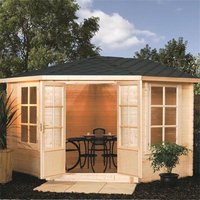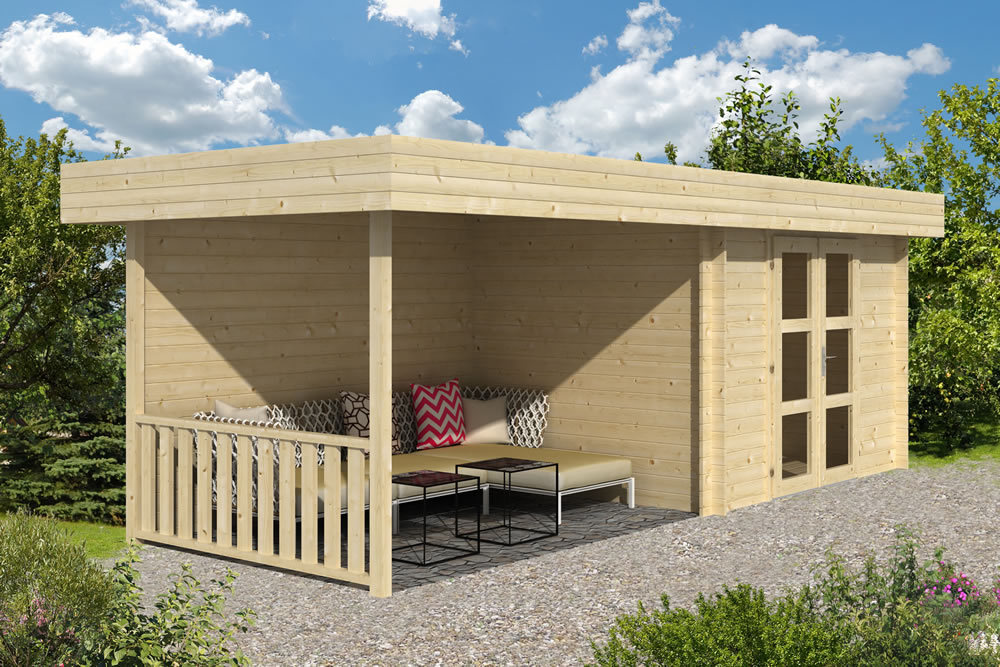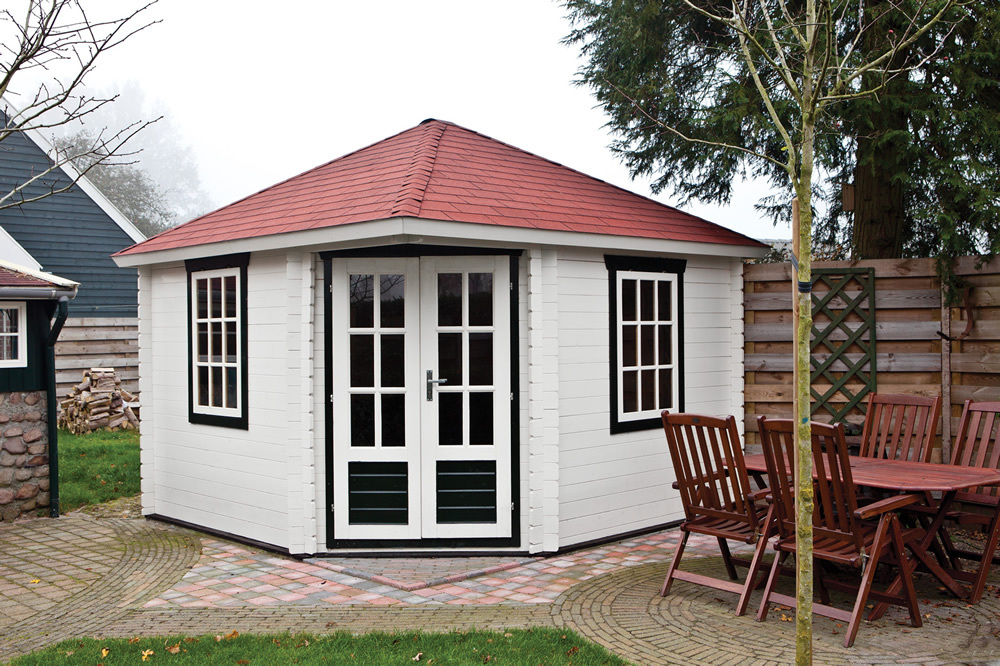Categories Blog Things to Consider When Purchasing a Wooden Sum...
Things to Consider When Purchasing a Wooden Summerhouse

If you are looking to create more space around your home at the fraction of the cost of a traditional extension, then of the most popular solutions is to build a wooden summerhouse This is because this form of garden building offers many of the same space advantages but can be built in much less time and without as much red tape getting in your way.
As a result of this great demand for a summerhouse, there is an endless selection of styles, sizes and specifications to choose from that will all vary in price depending upon a number of factors including quality of materials used, the options available and most importantly the thickness of the timbers used to make up the building.
What Designs are Available?
Depending upon the space you have available there will be a number of options available to choose from. Ranging in style from traditional to contemporary, you can be sure there is a summerhouse suitable for all applications and installation locations.
Traditional Designs – This style of summerhouse generally features a pitched roof design and a number of windows to allow natural light to enter the space. Access is normally provided via a single door that can be specified with high security locking features to ensure the contents inside remain safe at all times.

Modern Designs – In recent times, more and more modern designed summerhouses and garden buildings are becoming available. Most of these styles have either a mono pitched roof or flat roof and tend to have large windows at the front to allow lots of natural light to enter inside.
Space Saving Designs – In situations where space is restricted, there is a selection of corner summerhouses available that are designed to slot neatly into the corner of your garden therefore reducing wasted space. This makes these styles extremely popular with homeowners of small gardens or outdoor spaces.
What is the Quality of the Materials Used?
At first glance, most summerhouses will look to be made up of a very similar construction however when you look a little closer vast differences in quality start to become apparent that can all play a major part in the durability and overall look of the structure.
For example, cheap summerhouse and log cabins that are made up of timber that has been grown fast will more than likely start to twist, warp and split within a few months as the wood will not have been seasoned properly.
In comparison to the above, a high quality summerhouse constructed using slow grown timbers will be far less susceptible to twisting.
The final consideration when looking at the quality of the materials is the time of year the timber has been felled. This is because timber harvested during winter time will have far less sap in it as the tree is in a dormant state therefore will lead to a far better quality of finish once turned into a summerhouse.
Are Finger Joints Used in the Construction?
To reduce waste during the manufacturing process, some companies will use finger joints as a way of connecting 2 shorter pieces of wood together to form a single length. Although this method of construction does not weaken the structure, it can sometimes look unsightly so always try to opt for timbers that are made up of single lengths or where the % of such joints is kept to a bare minimum.
To achieve the most visually pleasing appearance, check that the boards are all made up of solid single pieces of timber free of finger joints or the % of finger joints are kept to a bare minimum.
What Thickness are the Walls?
Wooden summerhouses are available in various specifications depending upon the amount of money you may be looking to spend. Small garden buildings that will only have occasional use are generally constructed using 12mm shiplap boards fixed to a sub frame. In comparison, for the ultimate in rigidity and durability, larger summerhouse that are suitable for use as home offices etc are generally supplied in thicknesses of between 22mm – 75mm in thickness.
Garden buildings such as summerhouses or log cabins are available in a wide range of timber thicknesses depending upon the intended use. For example, a small summerhouse for occasional use may be constructed from 12mm shiplap boards whereas a structure designed to be used for a home office may have walls up to 75mm thick and will ultimately provide far more strength and rigidity.
In conclusion, when selecting a new quality summerhouse please be sure to take into account some of the above information so you can choose the best structure to meet your requirements. To view our entire range of high quality summerhouses and garden structures please visit our online shop where you are sure to find a product to meet your requirements.




